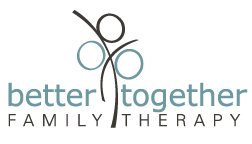LGBTQIA+: Our Maryland Therapists Explain What it All Means
What does LGBTQIA+ stand for? Maryland therapists break it down.
You can also ask your kids! Kids of all ages are increasingly familiar with this terminology.
Let’s start with LGBT…
L = lesbian. Describes a woman who is attracted to women.
G = gay. Most often refers to a man who is attracted to men. Is sometimes also used more generally to refer to anyone who identifies as gay or lesbian.
B = bisexual. Attracted to both men and women. (Bi = both)
T = transgender. Refers to a person who identifies as a gender that doesn’t match the sex they were assigned at birth. This experience is sometimes called gender dysphoria. Gender dysphoria is currently classified as a mental health condition. The opposite of transgender is cisgender.
Note that these first four assume that gender is a binary construct. It’s either this or that. Medically that’s not true. We’ve chosen to reduce it to 2 categories, but research has shown that there’s more to the story.
Now what’s QIAP or QIA+?
Q = queer or questioning. This means “I don’t fit the binary definitions of male/female or straight/gay.” The term “Queer” should only be used to describe those who self identify as queer. It is still a hostile term if used to describe others.
I = intersex. Born with reproductive organs that don’t fit the definition of male or female, typically a combination of both. This is a medical classification, and is estimated to apply to 1.7% of the US population.
A = asexual. Does not experience sexual attraction or desire a sexual relationship. The A can also be used to represent allies (cisgender and heterosexual people who support LGBTQIA+ rights)
P = pansexual. Attracted to people regardless of gender, including those who identify as transgender or nonbinary. This can also be called omnisexual. P also = polyamorous = interested in or open to having more than one intimate partner in your life at a time.
+ = infinite other possibilities. Here are just a few.
Agender= genderless
Nonbinary = outside or beyond the binary characterization of male or female
Demisexual = attraction is based on emotional bond, not gender
Genderfluid= experiencing oneself as sometimes male and sometimes female. Can be considered transgender.
Genderqueer = identifying as both genders, no gender, or otherwise not gender binary
Two-spirit = a 3rd gender recognized in some Native American cultures
What to do When Someone Comes Out to You
When someone chooses to share this part of their identity with you, it’s an invitation to join the circle of people they truly trust. Take the opportunity to expand your knowledge. And ask what they need from you.
This person is also inviting you to become an ally. Not sure how to do that? Check out our post on allyship for ideas.
Unsure if you’re ready or able to be supportive? Exploring these challenges with a licensed therapist can help.



